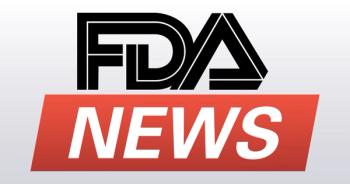Subscribe to Contemporary Pediatrics!
Interested in receiving a copy of the Contemporary Pediatrics journal every issue?
Want to stay up to date with pediatric news? Subscribe to the Contemporary Pediatrics e-newsletter to receive emailed updates regarding new data, pediatric clinical trials, puzzler cases, FDA news, and much more.
You can also follow us on LinkedIn, X, Facebook, and Blue Sky.
Thank you for visiting the Contemporary Pediatrics® website. Take a look at some of our top stories from the week (Monday, June 16, to Friday, June 20, 2025), and click on each link to read and watch anything you may have missed.
FDA approves twice-yearly lenacapavir as PrEP for HIV in adolescents, adults
On June 18, 2025, the FDA approved lenacapavir (Yeztugo; Gilead Sciences), a subcutaneous HIV-1 capsid inhibitor, as the first and only twice-yearly pre-exposure prophylaxis (PrEP) option to reduce the risk of sexually acquired HIV in adults and adolescents weighing at least 35 kg (77 lbs). The approval marks a milestone in HIV prevention, offering a long-acting alternative to daily oral PrEP.
The decision was supported by positive results from the phase 3 PURPOSE 1 and PURPOSE 2 trials, in which lenacapavir demonstrated superior HIV prevention compared to daily oral emtricitabine/tenofovir disoproxil fumarate (F/TDF), with over 99.9% of participants remaining HIV negative across diverse populations. The extended dosing interval may help address challenges such as adherence and stigma, potentially improving uptake and persistence in at-risk populations.
Click here for more details and additional data.
FDA approves garadacimab-gxii to prevent HAE attacks in patients aged 12 years, older
On June 16, 2025, the FDA approved garadacimab-gxii (Andembry; CSL) for the prevention of hereditary angioedema (HAE) attacks in patients aged 12 years and older, making it the first factor XIIa-targeting monoclonal antibody approved for prophylactic use in this population.
Approval was based on the phase 3 VANGUARD trial, which demonstrated that once-monthly garadacimab-gxii significantly reduced HAE attacks by 86.5% compared to placebo, with a median attack rate reduction of over 99%. Interim data from an ongoing extension study supported its long-term safety and efficacy. CSL's first fully developed monoclonal antibody offers a new mechanism of action and monthly dosing convenience for patients with this rare, life-threatening disease.
Click here for full approval details, and other recent HAE news.
AAP updates guidance on contraception for adolescents
The American Academy of Pediatrics (AAP) released updated guidance in Pediatrics urging pediatricians to take a comprehensive, adolescent-centered approach to contraceptive care, replacing its 2014 policy.
The AAP now recommends developmentally appropriate contraceptive counseling that supports adolescent autonomy and equitable access to the full range of methods, including long-acting reversible contraception, hormonal options, barrier methods, and emergency contraception. The policy emphasizes the importance of confidential, one-on-one conversations regardless of parental presence, and supports expanding access through telehealth and school-based services. The updated statement also encourages pediatricians to integrate contraceptive counseling with broader reproductive health care, including STI screening and HPV vaccination.
Click here for additional details.
John Browning, MD, explains dermatological questions to ask, answer in primary care
John Browning, MD, Chief of Dermatology at Children’s Hospital of San Antonio and Organon Health Partner, encouraged pediatricians to feel confident initiating treatment for atopic dermatitis (AD) using steroid-free creams when evaluating patients during routine visits.
“I believe that pediatricians should be very confident to prescribe a steroid-free cream. They should feel like they can and should do that when they see a patient,” Browning said. He noted that AD is often first observed during routine physicals or skin checks and emphasized that early, informed intervention can help prevent prolonged suffering or delays in care.
Discussing phase 3 data of Panzyga for PANS, with Michael Daines, MD
Michael O. Daines, MD, division chief of Pediatric Allergy and Immunology at the University of Arizona College of Medicine and principal investigator of the phase 3 trial evaluating Panzyga for pediatric acute-onset neuropsychiatric syndrome (PANS), emphasized the potential clinical benefit of the treatment despite narrowly missing its primary efficacy endpoint in a recent phase 3 study.
However, the trial's secondary endpoint—the Clinical Global Impression-Improvement (CGI-I) scale—showed a statistically and clinically significant improvement (P = 0.017).
"This is a broader tool that looks at essentially how sick the child is," said Daines. "It’s also going to include those minor criteria... and there was a clinically relevant and strongly significant improvement in the CGI in the children that were receiving treatment."










